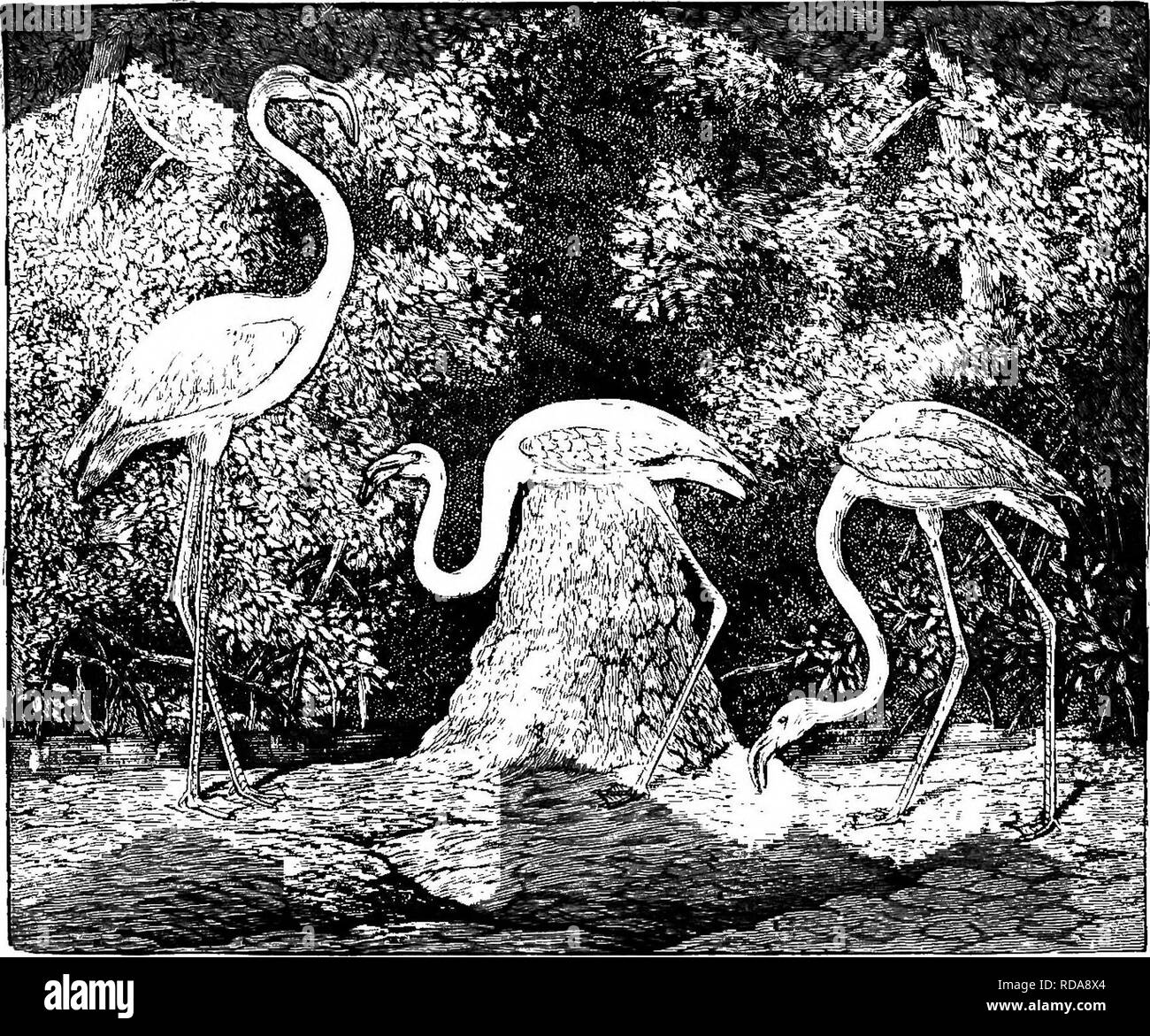. Key to North American birds. Containing a concise account of every species of living and fossil bird at present known from the continent north of the Mexican and United States boundary, inclusive of Greenland and Lower California, with which are incorporated General ornithology: an outline of the structure and classification of birds; and Field ornithology, a manual of collecting, preparing, and preserving birds. Birds; Birds. 678 SYSTEMATIC SYNOPSIS. —LAMELLIBOSTBES—ODONTOGLOSS^. 51. Family PHCENICOPTEBID^: Flamingoes. Bin unique in shape, abruptly bent in the middle; so that the upper surf

Image details
Contributor:
The Book Worm / Alamy Stock PhotoImage ID:
RDA8X4File size:
7.1 MB (1 MB Compressed download)Releases:
Model - no | Property - noDo I need a release?Dimensions:
1733 x 1442 px | 29.3 x 24.4 cm | 11.6 x 9.6 inches | 150dpiMore information:
This image is a public domain image, which means either that copyright has expired in the image or the copyright holder has waived their copyright. Alamy charges you a fee for access to the high resolution copy of the image.
This image could have imperfections as it’s either historical or reportage.
. Key to North American birds. Containing a concise account of every species of living and fossil bird at present known from the continent north of the Mexican and United States boundary, inclusive of Greenland and Lower California, with which are incorporated General ornithology: an outline of the structure and classification of birds; and Field ornithology, a manual of collecting, preparing, and preserving birds. Birds; Birds. 678 SYSTEMATIC SYNOPSIS. —LAMELLIBOSTBES—ODONTOGLOSS^. 51. Family PHCENICOPTEBID^: Flamingoes. Bin unique in shape, abruptly bent in the middle; so that the upper surface faces the ground in the act of feeding; in length much exceeding the head, very large and' thick, entirely invested with membrane (vrithout the distinct terminal homy nail of Anatidai). Mandible narrower than maxilla at base, broader ia the rest of its extent, ridged near the end. Edges of upper mandible furnished with a great number (some 150) of oblique laminse; of lower incurved, similarly furnished. Nostrils sub-basal, nearer commissure than culmen, linear, long. Tibiae bare below for a great distance, and with the tarsi broadly scutellate before and behind. Toes short, the anterior palmate with incised webs; the hallux elevated, free, . Fig. 469. — American Flamingoes. (Prom a photograph of a group mounted by F. S. Webster.) very small, or absent. Wings moderately long, ample, with enlarged inner secondaries folding over and beyond the primaries when closed. Tail short. There are about 7 species of Flamingoes, inhabiting the warmer parts of both Hemispheres; three of America besides ours, and three or four Old World. They represent several genera of late systematists, the most marked being that represented by P. andinus, which is three-toed. Our species falls in the restricted genus Phcenicorodias of Gray. 377. PHCENICCPTERUS. (Gr. ^loiviKonTepps, phoinikopieros, Lat. phoenicopterm, a flamingo: !. e. red-wing.) PLAMiNGOES. Character as above. Head bare between bil